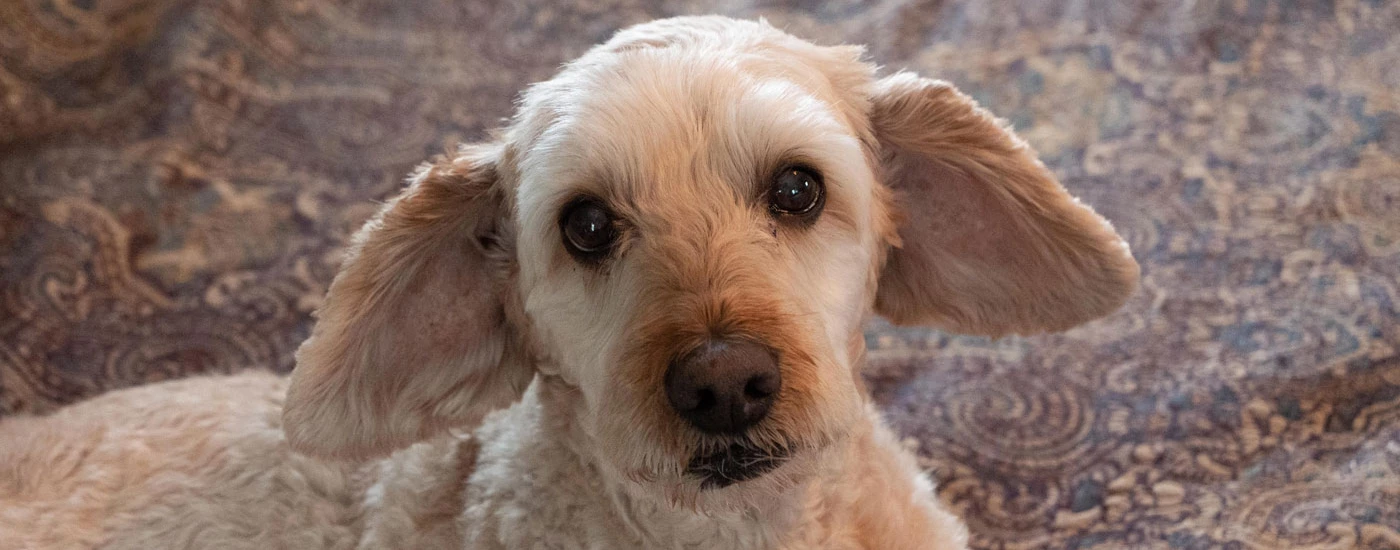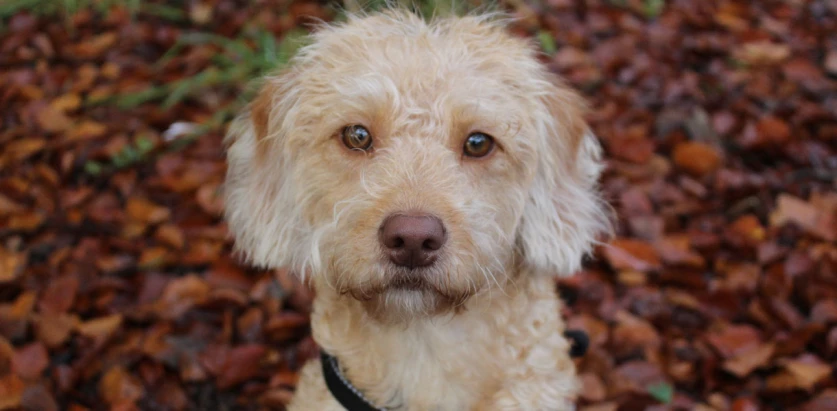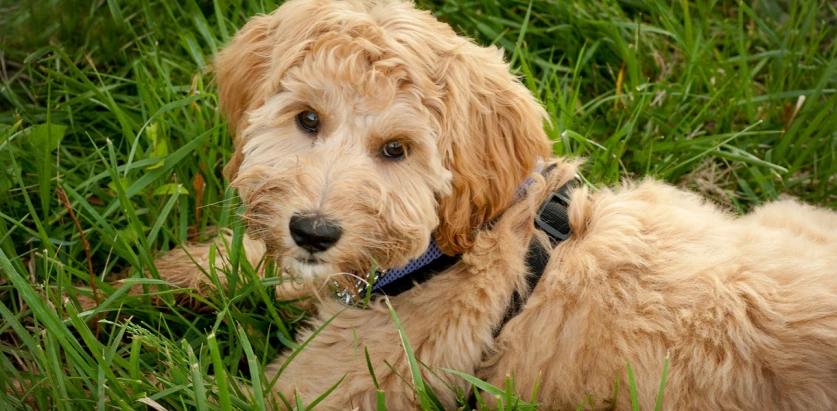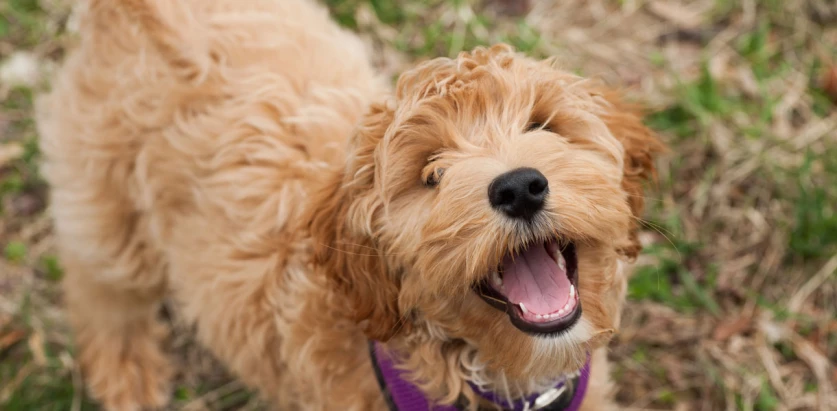About the Miniature Labradoodle
The Mini Labradoodle has become one of the most popular mixed breeds in recent years. Intelligent, playful and absolutely adorable, this little dog has all the charm of a Poodle and the rambunctiousness of a Labrador. They make perfect companion dogs and brilliant family pets.
We've laid out this guide so that you can explore all the benefits of owning your very own Mini Labradoodle, as well as some useful tips to make sure your canine pal has a long and happy life.
Miniature Labradoodle Gallery
What is the history & origin of the Miniature Labradoodle?
The Labradoodle breed originated in Australia in the 1970s. Breeders were trying to create a hypoallergenic dog by mixing the Labrador and the Poodle together.
When the Labradoodle exploded in popularity, they decided to start mixing the purebred Labrador Retriever with the Miniature Poodle to make smaller puppies, and so the Mini Labradoodle was born!
From the late 80s onwards, they became a sought after breed, and now even the Crown Princess and Prince of Norway have their own!
Who are Miniature Labradoodle dogs best for?
Mini Labradoodles make excellent family pets. They love being around people and form strong bonds with their owners. So, be prepared to show your puppy lots of affection, and you'll receive even more back.
As both parent breeds are energetic and athletic, the Mini Labradoodle is too, and they require a good amount of exercise and stimulation to keep them from becoming bored. So, it's important that their owners are able to commit time to regular walks and playing.
Due to their affectionate and clever nature, the Mini Labradoodle is also a great service dog and can be a brilliant companion for people who live alone.
How much grooming does a Miniature Labradoodle need?
How much your Mini Labradoodle sheds and how much grooming they require depends on which of the parent breeds they most take after.
If their coat is more similar to the Labrador, then they will shed quite a lot, but if they've inherited more from their Mini Poodle parent, they should have a low-shedding coat.
If the latter is true for your Mini Labradoodle, then they'll need more regular grooming and should be brushed daily to prevent their curly coat from becoming matted. They'll also need to be clipped pretty regularly.
If they've inherited a double coat from their Labrador parent, then weekly brushing will be enough.
Do Miniature Labradoodle bark much?
Both Labradors and Miniature Poodles are considered to be moderate barkers, so the Mini Labradoodle has the same tendency. They don't usually bark without reason, and it's usually due to excitement, anxiety or even boredom.
As long as the Mini Labradoodle puppy is trained early and given plenty of stimulation, excessive barking shouldn't become an issue.
Do Miniature Labradoodle bite?
Mini Labradoodles are known for being friendly and social dogs, so if they are raised properly and not allowed to become bored, biting won't be a problem.
Once again, this can depend on which parent they have inherited the most traits from, as Mini Poodles do have a reputation for being a bit snappy. However, if this behaviour is addressed when they're a puppy, then it shouldn't last into adulthood.
What is the temperament & personality of a Miniature Labradoodle?
Mini Labradoodles are smart, playful and friendly. They love receiving affection and attention from their owners and don't do well if left alone for long periods of time.
Their energetic nature means they need to be kept busy. As well as regular walks, you should provide them with interactive dog toys so they can amuse themselves.
One thing that's certain is that Mini Labradoodles don't make good guard dogs, as they're simply too friendly! So, if you're looking for a pooch to guard your home, the Mini Labradoodle isn't the best choice.
What is the weight & size of a Miniature Labradoodle?
As the Mini Labradoodle isn't yet a standardised breed, their size can vary quite a bit depending on which parent breed they take after the most.
If they're more like their Labrador parent, then they can be as big as 43-50cm. But, if they have more of the Mini Poodle genes, then they can be as little as 35-40cm.
When it comes to weight, a bigger Mini Labradoodle can weigh 22-29kg and a smaller one between 6-11kg.
How much training does a Miniature Labradoodle need?
Due to their intelligence, and their sweet nature, Mini Labradoodle puppies respond well to training. As with most dog breeds, they need to be socialised early so that they react well to other people and pets. They'll need to be exposed to new people and other dogs whilst they're still young.
The best training methods are ones that are based on positive reinforcement rather than punishment, and this should make sure your puppy grows into a confident and well-behaved pooch. The Mini Labradoodle will also benefit from puppy training classes, so this is definitely something to consider.
What are some of the most common health issues for a Miniature Labradoodle?
Unlike purebred dogs, hybrid dogs are at risk of developing health conditions that are common in both parent breeds. The most prevalent Mini Labradoodle health issues are:
Hip Dysplasia - is a deformity of the hip that develops as the dog grows. This results in a loose and painful joint that can cause limping.
Progressive Retinal Atrophy - is a degenerative disease that causes the deterioration of photoreceptor cells in the eyes, which can lead to partial or full blindness.
Patellar Luxation - this is when the dog's kneecap becomes dislocated from the socket and can lead to them developing arthritis over time.
Addison's Disease - this is when the required levels of corticosteroid hormones aren't being produced by the dog's adrenal glands. Luckily, it is treatable if diagnosed properly.
The best way to make sure the Mini Labradoodle puppy you get is healthy is to buy them from a reputable breeder who has carried out health checks on their parents.
What is the lifespan of a Miniature Labradoodle?
On average, mixed-breed dogs tend to live longer than purebred ones. As the Labrador Retriever has an average lifespan of 10-12 years, and the Mini Poodle lives 10-18 years, the Mini Labradoodle's life expectancy should be within this range.
How much should you feed a Miniature Labradoodle?
How much food your Mini Labradoodle needs depends on their age, size and activity level. But, on average, they will need between 1.5 and 2 cups of dry food a day. Make sure you use high-quality food with good nutritional values.
Labrador Retrievers are known to overeat, so Mini Labradoodles can inherit the same tendency. Stick to feeding them two or three times a day, and avoid any foods that are high in fat.
What is the price of a Miniature Labradoodle in Australia?
If you buy a Mini Labradoodle puppy from a private owner, then they can be fairly cheap. But, the best option is always to pay extra and buy one from a reputable breeder.
This will cost between $1,500 - $3,500, but it's worth the higher price to ensure you're getting a healthy dog and to avoid puppy mills.
Pros
- Easy to train
- Low shedding
- Playful and active
Cons
- Hard to find
- Extra grooming
- High separation anxiety





























